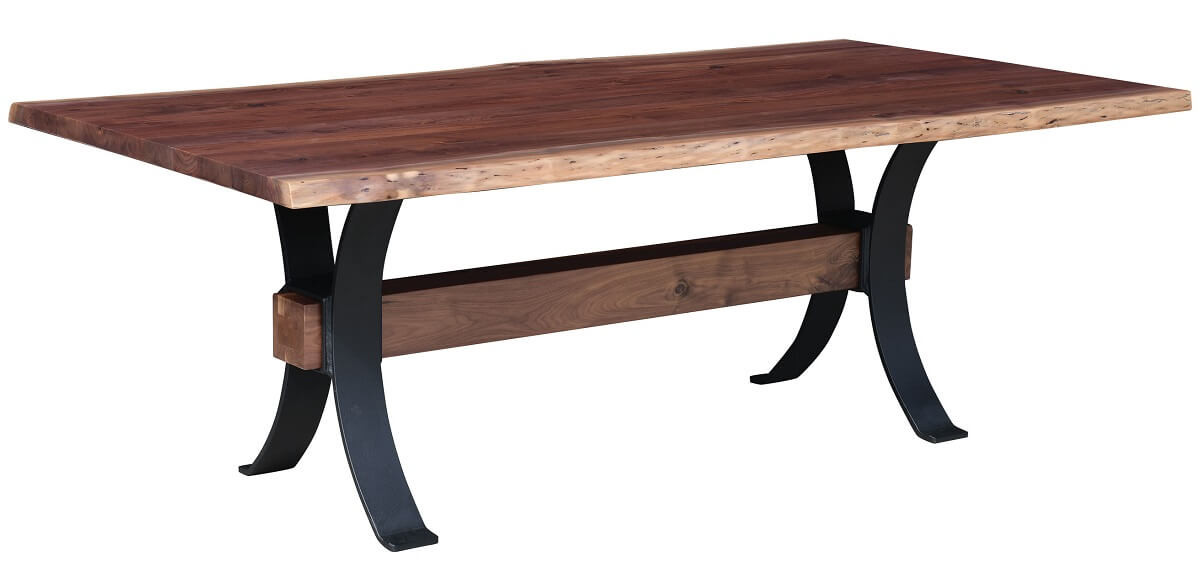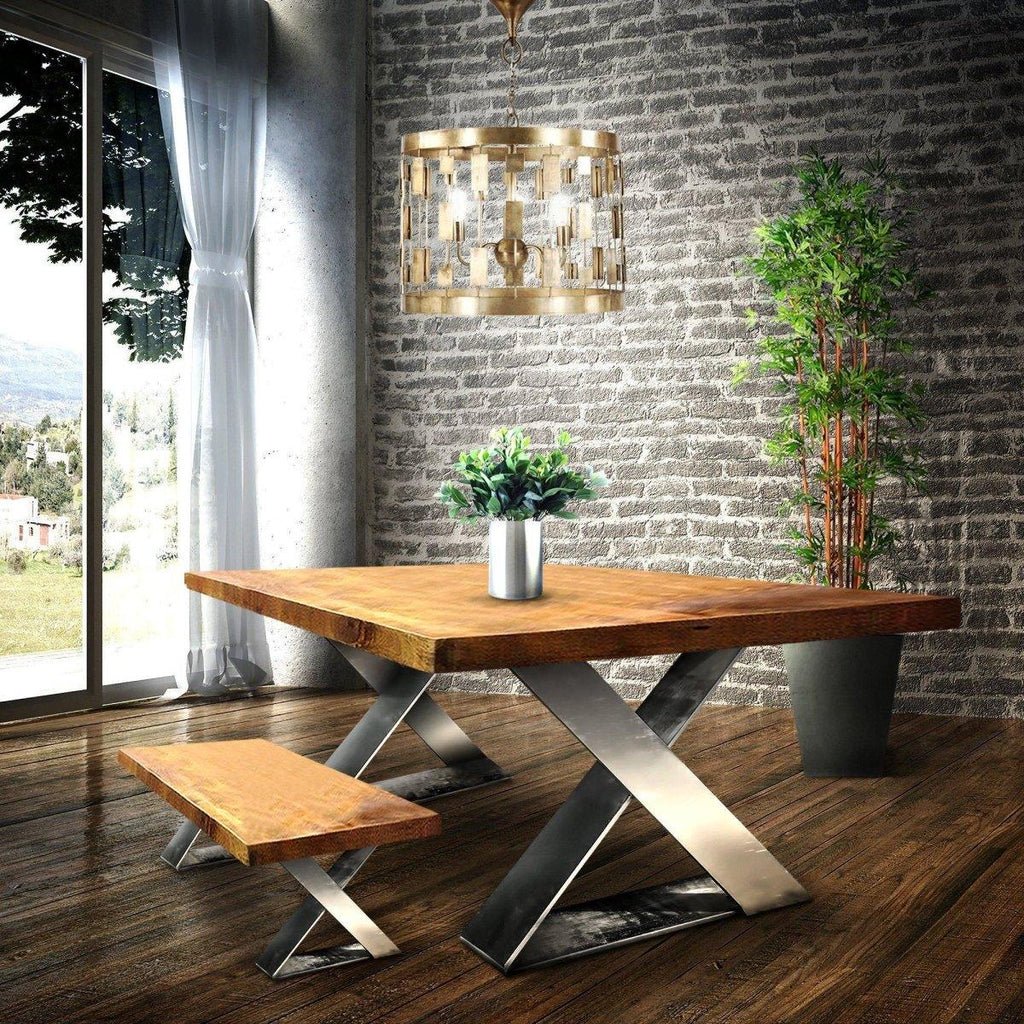The Top Trends in Dining Room Table Legs You Need to Know
The Top Trends in Dining Room Table Legs You Need to Know
Blog Article
From Conventional to Modern: Find the Ideal Dining Space Table Legs for Your Style
The option of dining-room table legs plays an essential duty in defining the total character of your space, bridging the void between traditional workmanship and contemporary aesthetics. While timeless layouts such as cabriole and turned legs stimulate a feeling of classic elegance, modern styles like barrette and geometric alternatives provide a chance for striking aesthetic rate of interest. Evaluating the ideal balance in between these designs requires a nuanced understanding of your existing decor and individual preference. As you think about these components, the question remains: how can you effortlessly incorporate these diverse leg designs to develop an unified eating experience?
Understanding Table Leg Styles
The variety of dining-room table leg designs can significantly influence both the aesthetic appeals and capability of the room. Each leg design adds one-of-a-kind sensible features and visual components, dealing with diverse design choices and use needs. Understanding these designs is crucial for picking the appropriate table that aligns with your overall indoor style vision.
For instance, conical legs provide a clean, timeless appearance that can improve a room's style, while stand bases supply stability and take full advantage of legroom, making them optimal for smaller spaces. Barrette legs, a trademark of mid-century modern layout, introduce an industrial style, enabling an airy, open feel. Trestle legs stimulate rustic charm, providing durable assistance and a sense of timelessness.
Furthermore, the choice of products plays a substantial function. Wood legs can bring heat and texture, whereas steel alternatives typically convey a streamlined, contemporary ambiance. Inevitably, recognizing table leg designs is crucial for producing a cohesive eating location that shows individual design while guaranteeing functionality and convenience. By thoughtfully taking into consideration these components, you can improve both the functional and visual appeal of your eating space.
Conventional Table Leg Options
When picking eating area table legs, standard options commonly personify timeless sophistication and workmanship. These designs mirror a rich heritage and a dedication to quality, making them suitable for those who appreciate traditional appearances.
One of the most iconic conventional leg designs is the cabriole leg, characterized by its stylish bent form. This layout commonly features attractive makings and is most typically discovered in Queen Anne and Chippendale furnishings. One more prominent choice is the transformed leg, which flaunts a collection of smooth, rounded forms that give a classic look while maintaining security.
Furthermore, the straight leg, while simple, offers a sturdy and basic framework that can mix effortlessly with a range of tabletop styles. For those attracted to ornate outlining, claw-and-ball feet legs evoke a sense of splendour and can offer as a magnificent focal point in any eating area.
Lastly, pedestal bases, although not purely legs, give an alternate conventional option that permits enough legroom and can be perfectly carved. Each of these conventional leg designs adds to the general ambiance of an eating space, marrying feature with aesthetic allure.

Modern Table Leg Designs
Modern table leg designs use a diverse array of styles that emphasize tidy lines and ingenious materials. These layouts usually prioritize capability while acting as striking focal factors within an eating space. Minimal aesthetic appeals prevail, with legs crafted from products such as steel, glass, and crafted timber, which contribute to a ventilated and contemporary feeling.
One popular style is the barrette leg, characterized by its slim, conical framework that offers security without overwhelming the table top (dining room table legs). This style is often discovered in mid-century modern-day furniture and can effortlessly match various table forms. An additional trend is making use of geometric shapes, where legs may tackle angular or asymmetrical kinds, adding aesthetic passion and a touch of artistry

Mixing Designs for One-of-a-kind Areas
Often, homeowners seek to create special eating rooms that show their personal style by mixing various layout elements. This method permits the consolidation of diverse looks, causing an unified yet unique click for more info environment. Combining a rustic wooden table with sleek, modern-day steel legs can produce an appealing contrast that raises the area's total charm.
Additionally, incorporating vintage table legs with contemporary table tops can evoke a sense of background while maintaining a modern-day sensibility. Such mixes not only display private taste yet also urge imagination, permitting house owners to curate a space that feels both individual and inviting.
Shade plays a crucial role in this blending process; selecting table legs that enhance or contrast with the existing color design can boost visual rate of interest. For example, whitewashed legs can soften the daring of a dark table surface, producing a well balanced aesthetic.
Tips for Choosing the Right Legs
Selecting the right table legs is crucial for achieving both capability and aesthetic charm in your eating room. Begin by taking into consideration the overall style of your area. Traditional settings gain from legs that include intricate makings or transformed designs, while contemporary areas may require streamlined, minimal styles.
Next, evaluate the elevation and stability of the legs. dining room table legs. Typical dining tables range in between 28 to 30 inches in height, so make sure the legs match this measurement for comfort. In addition, durable materials, such as hardwood or steel, can boost stability and durability
Assess the leg shape also-- options include straight, tapered, or stand designs. Straight legs offer a classic appearance, while tapered legs can include a touch of style. Pedestal bases give enough legroom and are ideal for smaller sized spaces.
Conclusion
In summary, selecting the ideal dining space table legs calls for cautious factor to consider of both modern and typical styles. Typical alternatives such as cabriole and transformed legs use ageless sophistication, while contemporary designs like hairpin and geometric forms give a contemporary touch. By balancing leg style, elevation, and material with the total decor, a natural and inviting ambience can be accomplished. Ultimately, the picked table legs must show the preferred visual, boosting the dining experience within the area. click here to read
The selection of dining room table leg designs can dramatically influence both the aesthetic appeals and functionality of the room. Inevitably, recognizing table leg styles is essential for developing a cohesive eating location that shows personal design while making sure practicality and comfort.One of go to this web-site the most iconic standard leg styles is the cabriole leg, defined by its graceful rounded form. Straight legs provide a timeless look, while conical legs can include a touch of style.In summary, choosing the excellent eating space table legs needs cautious consideration of both standard and modern-day styles.
Report this page